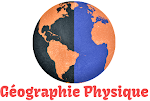Remote Sensing for Sustainability
Chapters within these major topic areas cover critical issues of urban planning and growth, endangered species conservation, water and air quality, forest damage by diseases and insects, energy supplies, and sustainable wind and solar energy potential—all using geospatial data, techniques, and analyses. As Barbara Ryan, GEO Secretariat Executive Director, notes in the Preface of this book, there is a critical need to understand the character of urban environments where approximately half of the human global population live in only about 3% of the Earth surface. Rapidly expanding, dense, sprawling, and vulnerable to human and natural impacts, urban systems must be understood in order to make timely and informed decisions aimed toward minimizing deforestation, air and water pollution, energy consumption, food deserts, marginal housing, and limited green spaces. This book makes a giant step forward in advancing global cooperation in remote sensing efforts and sharing knowledge desperately needed for Earth sustainability in a changing climate.







No comments:
Post a Comment